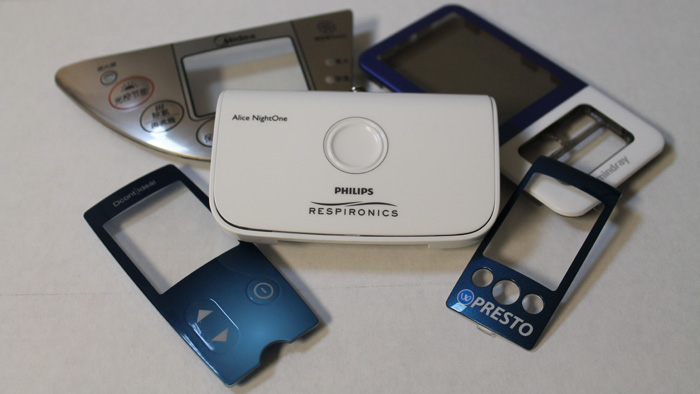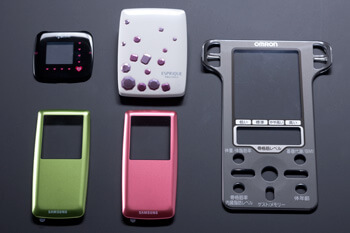Enhancing Production Effectiveness with In-Mold Decorations
Mastering In-Mold Decorations: Techniques, Patterns, and Ideal Practices for Ideal Outcomes
In the world of production, the art of in-mold designs stands as a pivotal aspect of product layout and production. In-Mold Decorations. By diving right into the strategies, trends, and finest techniques that underpin effective in-mold decoration processes, companies can unlock a realm of possibilities that not just elevate the aesthetic allure of their products yet also streamline manufacturing performance and strengthen customer involvement.
Product Option
Product selection is an essential facet of understanding in-mold decors, as it straight affects the quality and toughness of the last item. When selecting materials for in-mold decorations, it is important to consider elements such as compatibility with the molding process, the wanted visual result, and the environmental conditions the product will encounter. Thermoplastic materials like polypropylene, abs, and polycarbonate are typically used for in-mold decors because of their adaptability and capacity to attain elaborate designs. These products provide excellent moldability, making it possible for suppliers to develop complicated forms and patterns with precision.
In addition, the selected product should possess excellent attachment residential or commercial properties to ensure that the decoration adheres securely to the substratum during the molding procedure. Attachment in between the design and the product is critical for protecting against delamination and guaranteeing durable visual charm. Furthermore, products with high heat resistance are favored for in-mold decorations, especially for products that will certainly be revealed to raised temperature levels throughout their lifecycle. By carefully selecting the proper product for in-mold decors, manufacturers can improve the overall high quality and durability of their products, satisfying the expectations of both end-users and customers.
Layout Innovation
A vital consider advancing the field of in-mold designs is the constant exploration and implementation of design technology strategies. Layout innovation plays a crucial duty in improving the aesthetic appeal, functionality, and general top quality of products produced making use of in-mold decoration processes. By including cutting-edge layout aspects, producers can differentiate their items out there, draw in consumers, and stay in advance of competitors.
Among the crucial elements of design development in in-mold decorations is the assimilation of complex patterns, textures, and graphics that were formerly challenging to attain with conventional design methods. Advanced modern technologies such as 3D printing and digital layout tools make it possible for designers to create complicated and detailed layouts that can be perfectly moved onto molded components. Furthermore, using vivid colors, metal finishes, and special results like gloss or matte appearances can even more boost the visual charm of in-mold decorated products.
Moreover, style innovation prolongs past visual appeals to include useful enhancements such as ergonomic shapes, integrated functions, and customizable aspects that provide to specific individual demands. By accepting style innovation, makers can open new possibilities for item, creativity, and personalization differentiation in the competitive landscape of in-mold designs.
Manufacturing Performance
Effective production processes are important for translating the cutting-edge layouts developed in the field of in-mold decors right into top notch completed products that fulfill market demands and consumer assumptions. In the realm of in-mold decorations, manufacturing performance includes various crucial elements that contribute to the total success of the production process.
In addition, applying automation and robotics in the manufacturing line can substantially boost efficiency by simplifying repeated jobs and lowering the margin of error. Automation not only increases the production procedure however also improves accuracy and repeatability, causing a more high-quality and consistent end product. Moreover, adopting lean production principles, such as just-in-time stock management and waste decrease strategies, can additionally improve production effectiveness by minimizing downtime and enhancing source utilization. On the whole, a holistic method to manufacturing performance is vital in maximizing the potential of in-mold design strategies and achieving optimal lead to the open market landscape.
Top Quality Control Procedures
What are the vital approaches for ensuring rigorous quality assurance measures in the world of in-mold decors? Quality assurance procedures are vital in in-mold design processes to ensure the manufacturing of top quality and More Info flawless finished products. One vital method is the application of rigorous inspection methods at every phase of the production procedure. This includes carrying out comprehensive aesthetic examinations, dimensional checks, and shade consistency evaluations to determine any disparities or defects beforehand.
Making use of advanced modern technologies such as automated examination systems can also enhance the quality control process by giving precise and reliable data for analysis. These systems can identify imperfections that might be missed out on by hand-operated inspections, thereby enhancing general item quality and consistency.

Regular training and advancement programs for staff members involved in the in-mold design procedure can additionally contribute to preserving top notch standards. By educating staff on finest techniques, top quality expectations, and the significance of interest to information, firms can cultivate a culture of high quality consciousness throughout the company.
Customer Allure
To boost the marketability of in-mold decor items, catering and understanding to consumer preferences play an important duty in determining their appeal and success. Consumer appeal in in-mold decorations is influenced by various factors, consisting of design looks, shade options, longevity, and total capability. Customers are progressively seeking customized and special next items that show their uniqueness and style. Providing personalization options such as customized designs, shade variants, and textural aspects can significantly boost the charm of in-mold decoration items.

Final Thought
In-mold designs use a versatile and efficient means to enhance product aesthetic appeals. Grasping in-mold decorations calls for an alternative method that thinks about all elements of the manufacturing procedure to make certain success.
In the realm of manufacturing, the art of in-mold decors stands as a crucial element of item layout and manufacturing. Layout advancement plays an important role in boosting the aesthetic allure, performance, and overall top quality of products made utilizing in-mold decoration procedures.One of the essential facets of layout development in in-mold decors is the combination of intricate patterns, structures, and graphics that were previously challenging to attain with conventional decoration techniques.Efficient production procedures are vital for translating the ingenious designs developed in the area of in-mold decors into high-quality finished items that fulfill market demands and consumer assumptions. Offering personalization alternatives such as individualized layouts, shade variants, and textural components can substantially improve the allure of in-mold decoration products.